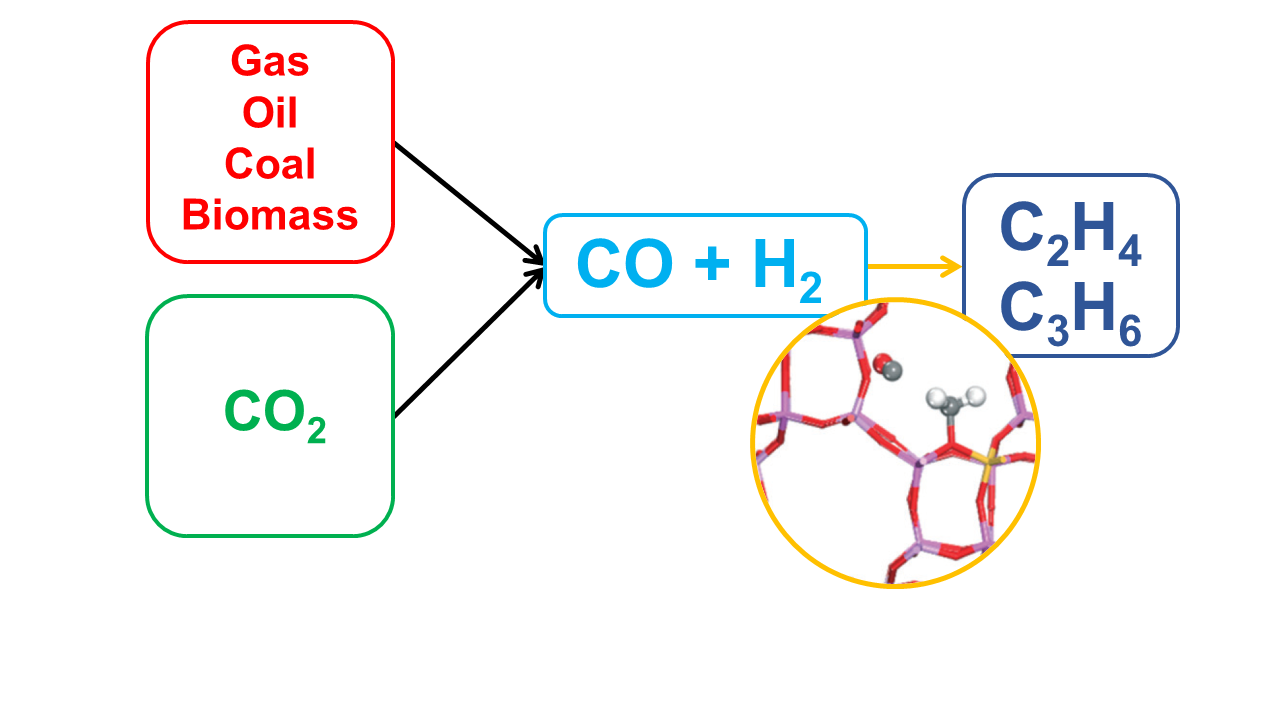Mechanistic study of the syngas-to-hydrocarbons reaction
Mechanistic study of the syngas-to-hydrocarbons reaction
Promotor(en): K. De Wispelaere /18NANO06 / Nanoporous materialsA major challenge in chemical industry nowadays is the design of catalysts that efficiently produce ethene and propene without suffering from rapid deactivation and allowing an excellent control of product selectivity. Such developments are needed to ensure the economic viability of many contemporary zeolite-catalyzed processes such as methanol-to-hydrocarbons (MTH), syngas-to-hydrocarbons (STH) and biomass conversion. A particularly interesting process is the STH conversion, which requires a multifunctional catalyst. Moreover, when coupled with a reverse water gas shift reaction, CO2 can be used as resource for this process.1 The latter opens perspectives to capture CO2 and convert it into valuable products in an attempt to limit global warming by exceedingly high atmospheric carbon concentrations.
Recently, a very selective direct zeolite-catalyzed conversion of syngas to hydrocarbons has been proposed, circumventing the inefficient intermediate production of methanol.2 Such conversion on a transition-metal surface is the well-established Fischer-Tropsch synthesis (FTS) reaction, which suffers from relatively low selectivity to light hydrocarbons. However, in a zeolitic environment, such process was found to occur much more selectively as recently demonstrated with a mixed Zr-Cr-oxide-zeolite catalyst.2 Some studies report the potential role of ketene intermediates in the STH conversion,3 but apart from that many mechanistic details are lacking.

Objectives
The STH conversion requires a multifunctional catalyst consisting of a metal oxide and a zeolite. In the project the role of each of these phases will be unraveled by characterizing the various active sites occuring in such materials. Also the relative positioning of the various active sites will be investigated. Once a clear view on the structure of the catalyst is obtained, a thorough mechanistic study will be performed to elucidate the main pathways that lead from syngas to the first hydrocarbons. This work will be inspired by the solid experience the Center for Molecular Modeling has with the methanol-to-hydrocarbons reaction and experimental findings on the role of CO in the formation of the first C-C bond under MTH conditions.4
This project requires the application of several advanced molecular simulation techniques, which rely on first principle static and molecular dynamics simulations. The Center for Molecular Modeling has built up vast expertise in these advanced simulation techniques and collaborates on the subject with leading experimental and theoretical partners. The student will be actively coached to get acquainted with the plethora of techniques needed to tackle the proposed problem. It is the intention to involve the student actively in the work discussions with our collaborators. The CMM has access to sufficient computational resources to execute this research project. The proposed topic is challenging and requires technical skills, creativity and chemical insight.
- Study programmeMaster of Science in Chemical Engineering [EMCHEM]KeywordsHeterogeneous Catalysis, Zeolites, syngas-to-hydrocarbons

